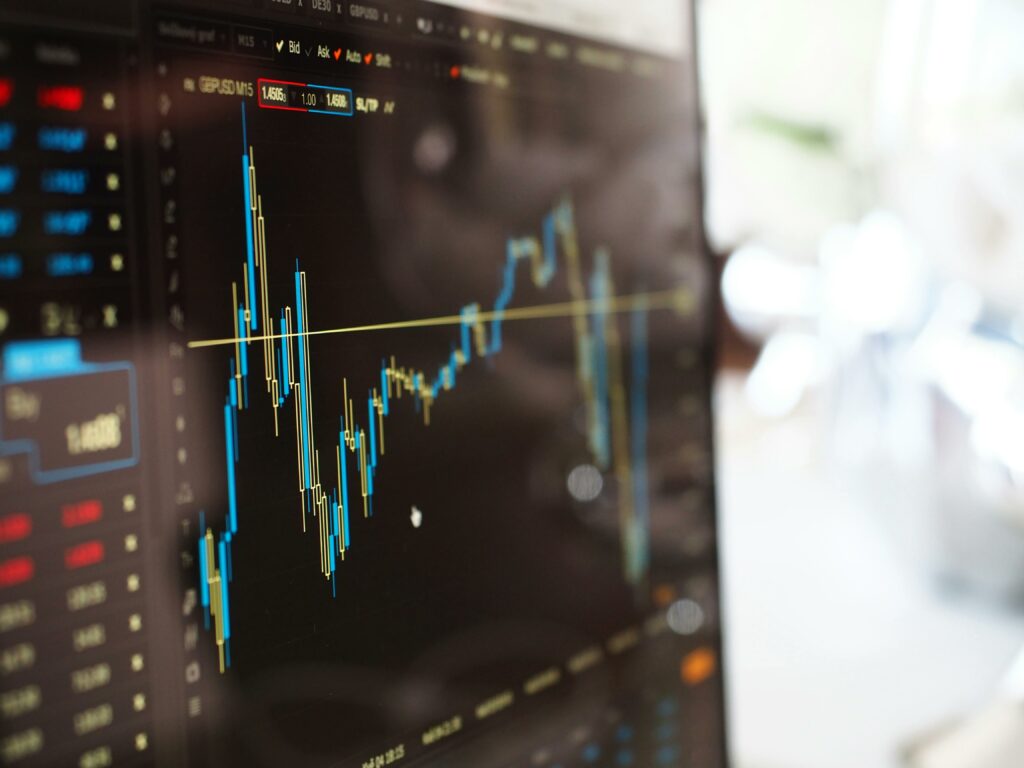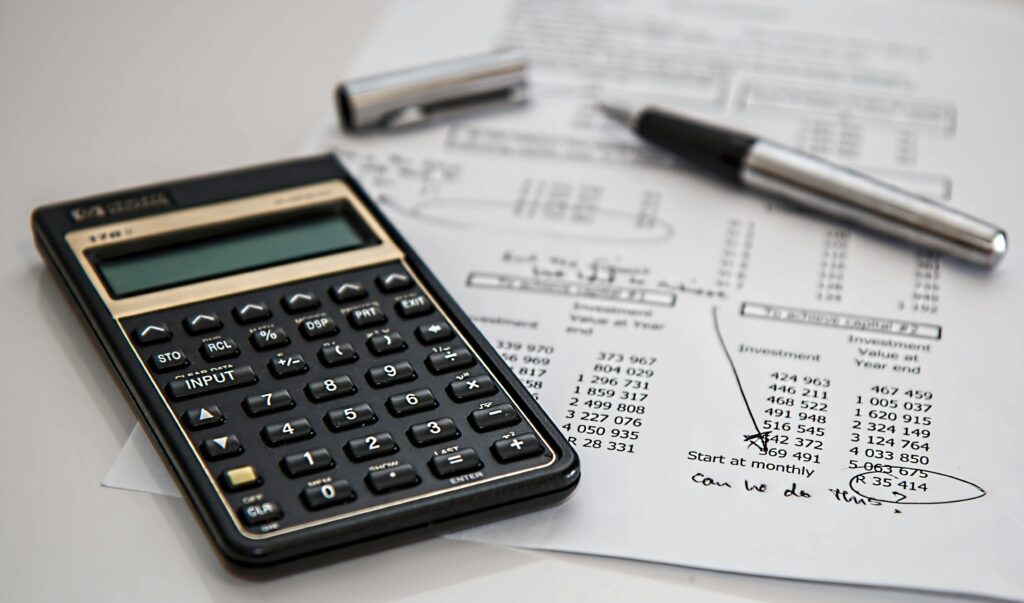Love our content? Show your support by following us — pretty please!🥺
FOLLOW ON PINTEREST
Hi! I’m Kate, the face behind KateFi.com—a blog all about making life easier and more affordable.
I’m thrilled you’re joining me today to talk about a topic that’s near and dear to my heart: creating a solid emergency fund. If there’s one thing I’ve learned from working with women—and people in general—on their financial journeys, it’s that uncertainty can happen to anyone at any time. Jobs get lost, medical bills pop up, cars break down, roofs leak, and the list goes on. That’s why building a personal safety net is essential. It helps protect you and your loved ones from the financial stress that can come from life’s curveballs, so you can focus on your goals, your passions, and your family’s future without constantly worrying about the “what ifs.”
Today, I’m going to walk you through the ins and outs of creating a robust emergency fund—from shifting your mindset to picking the best account for your money, to staying motivated along the way. I’ll also include tons of external resources and tips to make this process smoother. Let’s do this step by step. I promise, by the end of this post, you’ll feel more confident about how to safeguard your finances against unpredictable events. Let’s jump right in!
1. Why an Emergency Fund Matters More Than You Think
You might be asking, “Kate, why is everyone always talking about emergency funds?” The simple answer: peace of mind. Having a dedicated reserve of cash set aside specifically for unexpected events is like carrying an umbrella on a cloudy day—you might not need it, but you’ll be so grateful it’s there if it starts to pour.
Job Loss or Reduced Income
One of the most common reasons people tap into emergency savings is losing a job or dealing with a sudden drop in income. Unexpected layoffs can turn life upside down if you’re living paycheck to paycheck. Those with a buffer can typically navigate this tough period more smoothly. They can pay their bills, feed their families, and buy themselves valuable time to search for the next job opportunity or pivot to a new career path. Without that cushion, it’s easy to spiral into high-interest debt or worse—missing payments entirely, which can damage your credit score for years to come.
Medical or Dental Emergencies
Even if you have comprehensive health insurance, deductibles and out-of-pocket expenses can add up quickly if you face a medical emergency. Dental bills can also be a nasty surprise, as certain procedures aren’t fully covered by standard plans. When you have emergency savings, you can breathe easier and focus on getting well (or helping a loved one recover) rather than losing sleep over the financial implications.
Unexpected Home or Car Repairs
Owning a home or a car comes with ongoing upkeep costs, but big repairs often strike at the worst times—like a burst pipe during the holidays or a car breakdown right when you need to drive across the state. While insurance can help cover some costs, there’s typically a deductible to pay, and not everything is covered. A well-stocked emergency fund ensures you can deal with these issues promptly, preventing further damage or costly delays.
Financial and Emotional Stress Relief
Money troubles are a common source of stress in relationships and families. When you don’t have a backup plan for emergencies, every unexpected cost feels like a crisis. This kind of stress can take a toll on your health, your relationships, and even your work performance. By having dedicated savings, you’re buying yourself emotional calm in times of chaos. It’s one of the biggest gifts you can give yourself and the people you care about.
Freedom to Take Calculated Risks
Believe it or not, an emergency fund doesn’t just protect you in bad times—it can also empower you to take smart risks. Ever wanted to leave a job that drains you to start your own business? Or maybe you’ve thought about returning to school for a career change. It’s much easier to make these bold moves when you know you have a cushion to fall back on. That extra buffer might be the green light you need to explore new opportunities.
For more information on why emergency funds are crucial, feel free to check out NerdWallet’s guide to emergency funds or Bankrate’s emergency savings resource page. Both sites offer detailed explanations and calculators that can help you get a sense of how much you might need.
💡 Follow KateFi.com on Pinterest for:
- Frugal living hacks
- Budget-friendly meal ideas
- Creative side hustle tips
- DIY tricks that save you money
2. Shifting Your Mindset: Overcoming Mental Barriers
Now that we’ve talked about the importance of emergency funds, let’s tackle the psychological barriers that often prevent people from actually building them. The concept is straightforward—save a few months’ worth of expenses in a separate account. But in practice, it can be tough to start, especially if you’ve never had a habit of saving or if you’re carrying debt.
“I Don’t Earn Enough to Save”
I can’t tell you how many times I’ve heard this. Yes, it’s challenging to save when money is tight, but you’d be amazed at what small, consistent contributions can achieve over time. Even if it’s just $20 or $50 a month, it adds up. The key is consistency and determination, not a massive paycheck. Remember, everyone starts somewhere. Even if your income is variable, commit to a minimal regular amount.
Scarcity vs. Abundance Mindset
If you grew up in a household where money was always scarce or a source of worry, you might naturally gravitate toward a scarcity mindset—constantly fearing that more disasters are around the corner. Shifting toward an abundance mindset involves re-framing how you think about money. Instead of seeing it as something that’s always slipping through your fingers, view it as a tool you’re learning to master. Affirmations, journaling, and having open conversations about your money fears can go a long way in reshaping your beliefs.
Tackling Perfectionism and All-or-Nothing Thinking
Sometimes, people don’t start saving because they think, “I can’t do it perfectly, so why bother?” or “I’ll wait until I can save more, so it actually counts.” Trust me, it all counts—even $5 saved this week is more than $0 saved last week. Waiting for a perfect moment to start is a recipe for staying stuck. Start wherever you are, with whatever you can manage, and adjust as your situation evolves.
The Lure of Lifestyle Inflation
One of the biggest threats to saving is lifestyle inflation—spending more simply because you’re earning more. Maybe you got a raise, and suddenly those daily coffee-shop runs or online shopping sprees become more frequent. That extra money disappears quickly if you’re not intentional. A trick I use is “paying myself first.” Whenever your income goes up or you get a windfall (like a bonus or tax refund), increase your automated savings contribution before changing your spending habits.
If you want to explore more about the psychology of saving and how to overcome your money blocks, check out The Balance’s personal finance section or Clever Girl Finance for tons of motivational tips and stories from women who’ve successfully overcome financial hurdles.
3. How to Figure Out the “Magic Number” for Your Emergency Fund
You’ve probably heard the rule of thumb: three to six months’ worth of living expenses in a separate account. This guideline is a good place to start, but your personal magic number may vary based on factors like family size, job security, and whether you have dependents.
Step 1: Calculate Your Monthly Expenses
Before you decide on a target, you need to know what you spend in a typical month. Add up the essentials:
- Housing: Mortgage or rent, plus utilities.
- Food: Groceries, dining out, meal deliveries.
- Transportation: Car payment, insurance, gas, public transportation costs.
- Insurance & Healthcare: Health insurance, life insurance, out-of-pocket medical costs.
- Debt Obligations: Minimum credit card payments, student loans, personal loans.
- Miscellaneous Essentials: Childcare, pet care, phone bills, internet, etc.
If you use budgeting apps like Mint or YNAB (You Need A Budget), you can usually generate a report showing your monthly spending. If you prefer old-school methods, a spreadsheet or even a notebook works just fine. Just be thorough.
Step 2: Determine Your Ideal Range
- Three Months of Expenses: If you have a stable job, few dependents, and a solid secondary safety net (maybe a partner who also earns an income or supportive family members), three months might be enough to cover a rough patch.
- Six Months or More: If you’re self-employed, work in a volatile industry, or have multiple dependents, aim for six months or more. This might sound daunting, but trust me, you’ll sleep better at night knowing you have an ample cushion.
Step 3: Consider Additional Factors
- Health Conditions: If you or a family member has ongoing medical expenses, you might want a bigger fund.
- Single vs. Dual Income: Households with a single breadwinner typically need a more robust emergency fund, whereas dual-income families can sometimes manage with slightly less.
- Future Plans: If you’re considering a major life change—like switching careers, starting a business, or having kids—factor that into your emergency fund target.
Once you have your magic number (or at least a rough range), don’t be intimidated if it feels big. Just break it down into smaller milestones. For example, if your ultimate goal is $15,000, start with a mini-goal of $1,000 or $2,500. Hitting these stepping stones will fuel your motivation to keep going.
4. Setting Up Your Emergency Fund: Where to Put Your Money
Not all savings vehicles are created equal. The key is finding a place for your emergency stash that’s both easily accessible (but not too accessible) and capable of earning you some interest.
High-Yield Savings Accounts
In my opinion, high-yield online savings accounts are the gold standard for emergency funds. They usually offer higher interest rates than traditional brick-and-mortar banks while still giving you quick access to your money. Plus, they’re typically FDIC-insured (up to $250,000), so you know your money is safe. Sites like Bankrate and NerdWallet regularly update lists of top high-yield savings accounts, making it easy for you to compare rates and features.
Money Market Accounts
Money market accounts function somewhat like high-yield savings accounts but often come with check-writing privileges or a debit card. While that can be convenient, the temptation to spend may be higher. Also, some money market accounts require higher minimum balances to avoid fees. Still, they’re worth looking into if you want slightly easier access for genuine emergencies.
Certificates of Deposit (CDs)
CDs can offer better interest rates than savings accounts, but the trade-off is that your money is locked in for a set period (usually anywhere from 3 months to 5 years). Withdrawing early could cost you a penalty. Because of this, CDs aren’t always ideal for emergency funds, unless you create a CD ladder strategy where different amounts mature at regular intervals. But even then, I usually recommend a standard high-yield savings account for immediate, penalty-free access.
Checking vs. Savings
Some people park their emergency funds in their checking accounts. While this can be practical, there’s a big downside: too much temptation to spend. When the money is in the same place as your daily spending cash, it’s all too easy to dip into it for non-emergencies. Even if you keep your emergency money in a checking account, consider opening one at a separate institution from your main checking. This little bit of separation can make a surprising difference in keeping you from spending that cash unless it’s absolutely necessary.
The 24-Hour Rule
One trick I personally love is putting my emergency fund in an account that requires a little effort—or time—to withdraw. Maybe it takes a day or two for the money to transfer to my primary checking. That brief waiting period forces me to really think about whether I need those funds right now. If I’m ready to wait 24 hours or 48 hours to get the money, it’s more likely that I’m dealing with a legitimate emergency rather than an impulse purchase.
5. Building Your Safety Net: Practical Saving Strategies
Now that you know why you need an emergency fund, how much to aim for, and where to stash your money, let’s talk about actual saving techniques. Creating a cushion from scratch might feel daunting, but I have plenty of approaches to share that can help you build that fund faster.
Pay Yourself First
If you’ve been reading about personal finance for a while, you’ve probably heard this advice repeatedly—and for good reason. When you “pay yourself first,” you automatically transfer money to your savings (or emergency fund) before you do anything else. By treating saving as a non-negotiable “expense,” you ensure that it happens consistently. If you wait until the end of the month to see what’s left, you might not end up saving anything at all.
- Automation Hack: Set up an automatic transfer from your checking to your emergency fund each payday. Even $50 per paycheck can add up over the course of a year.
Side Hustles and Gig Work
If your budget is too tight for comfort, consider picking up a side gig. Whether that’s freelance writing, dog walking, or tutoring, extra income can significantly speed up your emergency fund goals. Many people start with platforms like Upwork for freelance work, Rover for pet services, or TaskRabbit for odd jobs. If you have a particular skill—like graphic design, photography, or social media management—putting yourself out there can bring in a decent stream of extra cash.
- Pro Tip: Funnel 100% of your side-hustle income straight into your emergency fund until you reach a comfortable balance. This helps you resist the temptation of lifestyle inflation.
Rework Your Budget
If you’re struggling to find money to save, it might be time to re-examine your monthly expenses. Go line by line through your bank and credit card statements. Are there any subscriptions you’re not really using? Could you switch insurance providers for a better rate? Do you have a cable package you barely watch? These small cuts can free up dollars you can then reroute to your emergency fund.
Cash Windfalls
Whenever you receive a cash windfall—like a tax refund, work bonus, or even birthday gifts—put at least a portion into your emergency fund. It’s tempting to spend windfalls on treats or big purchases, but if you prioritize your emergency savings first, you’ll see your balance grow significantly. And trust me, you’ll still find a little money for fun if you plan well.
Sell Unused Items
Another way to bolster your emergency savings is by selling items you no longer need. Think old furniture, electronics, or clothes that are just sitting around collecting dust. Platforms like Facebook Marketplace, Poshmark, and eBay make it simpler than ever to connect with buyers looking for what you have. Not only do you earn extra cash, but you also declutter your space—which can be a win-win for your mental well-being.
Challenges and Gamification
Sometimes, saving can feel tedious. A great way to keep it exciting is by turning it into a challenge. For instance, try a 52-week challenge where you save a specific (and rising) amount each week. Or a no-spend weekend challenge where you commit to spending zero dollars on non-essentials for a certain timeframe. Gamifying the process can help you stay motivated and get creative with your spending habits.
6. Maintaining and Growing Your Emergency Fund
Once your emergency fund starts to take shape, the next step is maintaining—and possibly growing—it. If you use some of the money, you’ll want to replenish the balance. It’s like a living organism that needs care. Life happens, and you might find yourself dipping into your savings, but the idea is to get back on track as soon as possible.
Regular Check-Ins
Schedule a monthly or quarterly “money date” with yourself (or your partner, if applicable). During this check-in, review your budget, monitor your progress toward your emergency fund goal, and see if you need to adjust your contributions. This consistent attention helps you stay focused and accountable.
Incremental Increases
If you get a raise at work or your side hustle picks up steam, consider increasing the amount you automatically transfer to your emergency fund. Even an extra $20 or $30 a month can make a big difference over time. This step ensures your savings rate grows with you, rather than stagnating at an older income level.
Keep It for Real Emergencies
This might be obvious, but it’s worth emphasizing: discipline is key. A luxury vacation or a new gadget might feel “urgent” in the moment, but that’s not what your emergency fund is for. If you’re craving something special, set up a separate savings bucket for “fun” or “splurges” so you won’t be tempted to raid your safety net. An emergency truly means something that impacts your essential living conditions, health, or income.
Consider Indexing to Inflation
Over time, inflation can erode the value of your savings. While your emergency fund should stay in relatively low-risk, high-liquidity accounts, you might consider occasionally shifting any amount above your core emergency level into a slightly higher-yielding but still accessible place—like a short-term certificate of deposit or a money market fund. Just make sure you maintain quick access to the essential portion of your emergency stash.
7. Handling Debt While Building an Emergency Fund
A question that pops up often is: “Should I focus on paying off debt first or building an emergency fund?” The short answer: generally, do both at once—within reason.
A Starter Emergency Fund
If you’re swimming in high-interest credit card debt, it’s still important to have at least a small emergency fund to prevent having to charge additional expenses to your credit card. Many personal finance experts recommend a “starter” emergency fund of $500 to $1,000, which is enough to handle minor emergencies, like car repairs or a medical copay, without derailing your debt payoff plan.
Balancing Act
Pay the minimums on all your debts, then allocate extra funds strategically. High-interest debt (like credit card balances or payday loans) usually needs to be tackled first because it accumulates interest so quickly. But simultaneously keep building your emergency savings. As you pay off debt and free up more cash, you can boost your emergency fund contributions. It’s a balancing act, but it ensures you’re not left vulnerable if an unexpected expense arises.
Debt Consolidation Options
If your debt is overwhelming, consider exploring consolidation or refinancing options. A lower interest rate could free up funds to go toward your emergency savings. Just be aware of fees, and make sure you don’t close old credit cards right away, as this can sometimes impact your credit utilization ratio and credit history. Sites like Credit Karma and CreditCards.com can be good starting points for comparing different debt consolidation or balance-transfer offers.
8. Why Insurance Is Part of Your “Financial Safety Net” Strategy
Although the focus here is on emergency funds, insurance plays a huge role in protecting you from financial catastrophes that could wipe out your savings. Think of insurance and an emergency fund as two pillars of a strong safety net—one handles daily or short-term surprises, and the other offers broader protection against larger disasters.
Health Insurance
Health insurance isn’t just a nice-to-have; it’s crucial. A single hospital stay can set you back thousands—sometimes tens or hundreds of thousands—if you’re uninsured or underinsured. While emergency funds can help with smaller out-of-pocket expenses, you don’t want to rely on them solely for major medical bills. Check resources like Healthcare.gov (in the U.S.) or your country’s equivalent health insurance marketplace for coverage options.
Disability Insurance
If you’re unable to work due to illness or injury, disability insurance can replace a portion of your income. This type of coverage is especially important for breadwinners or single parents. An emergency fund can help for a while, but if a long-term disability keeps you out of work for months or years, you’ll need more protection.
Life Insurance
If you have dependents, life insurance ensures that your loved ones won’t be left in a financial bind if you pass away unexpectedly. For most people, term life insurance is a cost-effective choice, providing coverage for a specific period (like 20 or 30 years). It’s a straightforward way to protect your family’s future. You can compare quotes on Policygenius or SelectQuote.
Homeowners or Renters Insurance
Protect your dwelling and personal property. Even if you think you don’t have anything of “high value,” the cost of replacing furniture, electronics, and clothing after a fire or flood can be enormous. Renters insurance is typically inexpensive, often less than $20 a month, and homeowners insurance can be bundled with auto insurance to save money.
Umbrella Insurance
For additional liability protection beyond your auto and homeowners policies, umbrella insurance can cover unforeseen legal costs. It’s not always necessary for everyone, but if you have significant assets or potential risk factors (like a pool, trampoline, or a home business), an umbrella policy can add extra peace of mind.
An emergency fund and proper insurance coverage go hand in hand. Insurance claims take time to process, and deductibles can still hurt if you don’t have the money set aside. Conversely, relying solely on an emergency fund to cover large-scale emergencies (like a major health crisis) can drain your savings instantly. The combination of both is what truly keeps you covered from multiple angles.
9. Involving Family and Loved Ones in the Process
Emergency funds aren’t just for individuals. If you’re part of a family, it’s essential to be on the same page about how much you’re saving, where you’re storing that money, and what constitutes a “true emergency.”
Setting Shared Goals
If you have a partner, sit down and discuss your emergency fund target together. Make a joint decision about how many months of expenses you’d like to cover. Decide which account will hold the money and how you’ll fund it—does each person contribute a percentage of their income, or do you combine finances?
Teaching Kids About Saving
This is also an opportunity to show your children how to save. Even small kids can grasp the concept of setting aside part of their allowance in a “rainy day jar.” Older kids could learn about interest rates and the benefits of saving in a bank account. These lessons will help them form healthy money habits early, reducing the chance that they’ll view credit cards as “free money” when they become teenagers or young adults.
Communicating with Extended Family
If you have aging parents or adult children who might turn to you for financial support during crises, clarify boundaries around your emergency fund. While you may want to help loved ones, depleting your entire safety net to bail someone out can put you at risk. Having open, respectful conversations helps align everyone’s expectations, which can prevent misunderstandings later on.
10. Long-Term Perspectives: What to Do After You’ve Reached Your Goal
Reaching your initial emergency fund target is a huge accomplishment—celebrate it! But that doesn’t mean the journey is over. There are still ways to optimize and leverage your newfound financial stability.
Increase Contributions to Other Goals
Once your emergency fund is at a comfortable level, consider reallocating some of the money you’ve been saving to other financial goals. Maybe you want to invest more aggressively in your retirement accounts, save for a down payment on a house, or start that dream business. Think of your emergency fund as the foundation; once it’s set, you can build on top of it without fear that everything will collapse when life throws the occasional curveball.
Periodic Adjustments
As life changes, so do your emergency needs. Got a raise? Maybe bump up your emergency fund a bit to reflect your higher expenses. Changed jobs to something less stable? Consider adding an extra month or two of expenses to your cushion. Had a child or adopted a pet? You might need a larger buffer. Revisit your fund size annually or whenever you experience a major life event.
Avoid the Complacency Trap
It’s easy to think you’re “done” once you’ve achieved your magic number. But remember, inflation can erode your money’s value, and your life situation could change drastically in a few years. Complacency can also lead to forgetting you even have that emergency account—and accidentally draining it for non-emergency expenses. Staying aware keeps you prepared.
11. Real-Life Success Stories and Motivation
Sometimes, it helps to see how other people have navigated their journey to an emergency fund—especially if they started with modest means or faced significant obstacles along the way. Let me share a few motivational snippets from real folks (names changed to protect privacy, of course):
1. Sarah’s Single-Income Household
Sarah was a single mom working as a teacher. After reading about emergency funds, she started by depositing $25 from each paycheck into a separate account. Over time, she cut down on eating out and canceled a gym membership she rarely used, diverting those funds into her new savings. It took her 18 months, but Sarah eventually built up three months’ worth of living expenses. When her car broke down, she was able to cover the repair without missing her mortgage payment. “It was the first time I felt truly in control of my money,” she told me. “I’m so proud of how far I’ve come.”
2. James and Leah’s Shared Journey
James and Leah were newlyweds facing a mountain of student loan debt. They agreed on a budget that included both aggressive debt repayment and a small monthly contribution to a starter emergency fund of $1,000. After paying off a high-interest loan, they funneled what they used to pay toward the loan into their emergency fund. Before long, they had enough to cover three months of expenses. They credited their success to open communication and consistent money check-ins. “We hated the idea of not being prepared for life’s hiccups,” Leah said. “Now we feel so much more confident taking next steps like starting a family.”
3. Carla’s Freelancing Career
Carla was a freelance graphic designer, meaning her income was unpredictable month to month. After a particularly slow period left her almost unable to pay rent, she vowed to create a safety net. She started saving 20% of every check she received—no excuses. She also diversified her client base to stabilize her income. Over two years, Carla saved six months’ worth of expenses. “I feel free,” she said. “I love the freedom of being self-employed, but it used to come with a lot of anxiety. Now I know I can handle dry spells without panicking.”
These stories might not mirror your exact circumstances, but the principles are universal: consistent saving, budgeting, and the willingness to make temporary sacrifices for long-term stability. If you need even more encouragement, you can head over to personal finance forums like the r/personalfinance subreddit or the Bogleheads forum to read about real-life journeys and tips from everyday people. It’s an incredible community resource.
12. Final Thoughts: Start Now for a Stress-Free Tomorrow
We’ve covered everything from figuring out your monthly expenses to choosing the right account, from juggling debt repayments to staying motivated through mindset shifts. Now, the ball is in your court. Building an emergency fund isn’t a single event—it’s a journey. It requires patience, planning, and sometimes stepping out of your comfort zone. But I promise you, the peace of mind that comes with having that financial cushion is well worth the effort.
Here’s a quick recap of the major steps we’ve discussed:
- Determine Your Needed Cushion: Typically three to six months of essential expenses. Adjust based on your personal circumstances.
- Choose Your Savings Vehicle: High-yield savings accounts are often best, but money market accounts or short-term CDs can work in certain cases.
- Automate Your Saving: “Pay yourself first” so you’re never tempted to skip contributions.
- Cut Waste and Find Extra Income: Sell unused items, reduce subscriptions, or start a side hustle.
- Stay Disciplined: Only tap into this account for true emergencies, and always aim to replenish it ASAP.
- Review Regularly: As your life changes, your emergency fund should, too.
- Don’t Forget Insurance: The right policies protect you from bigger financial shocks that an emergency fund alone can’t handle.
- Celebrate Milestones: Acknowledge your progress and share your wins with loved ones to keep the motivation alive.
Finally, remember that every journey is different. If you can save $10 a month right now, do it. If you can do $100, great. The key is to start. And if you slip up here and there, don’t beat yourself up—just get back on track. The worst thing you can do is let minor setbacks derail your entire plan.
I hope this lengthy guide has given you the knowledge and confidence to begin—or strengthen—your emergency fund. Whether you’re single, married, have kids, or live with your best friend, I truly believe anyone can build a meaningful safety net with the right strategies and mindset. And I’m always cheering you on, every step of the way.
Now, take a deep breath. Make a plan. And start small if you must—just start. Your future self will be forever grateful that you did. Here’s to creating financial peace of mind and crafting a life that’s not dictated by money stress but guided by your own goals and dreams. You’ve got this!








